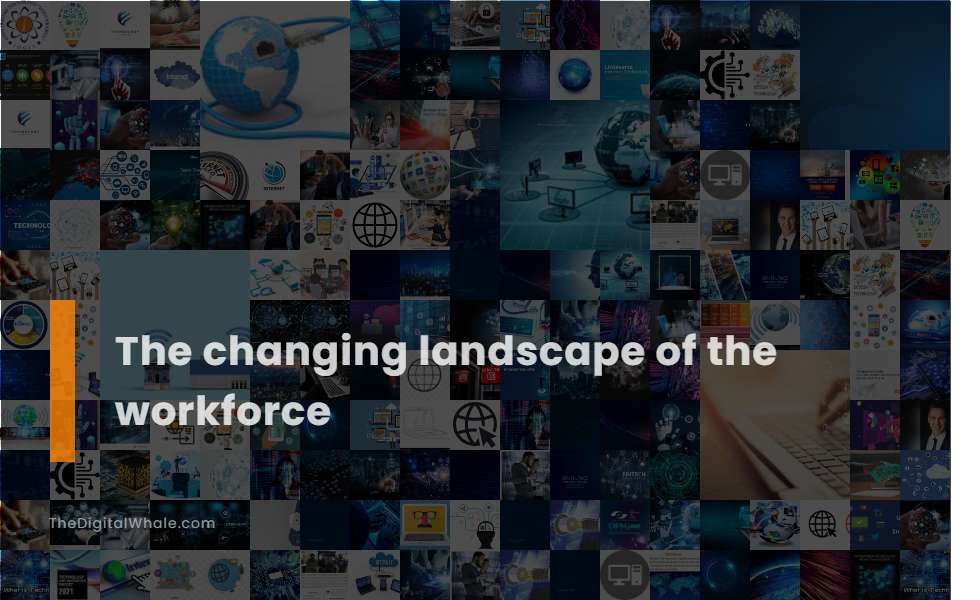The Changing Landscape of the Workforce
What is the workforce composed of these days? What is the changing landscape of the workforce? Let's find out more about The Changing Landscape of the Workforce.

Four-day work weeks may become the norm for some organizations.
The adoption of four-day work weeks is gaining traction, with numerous companies reporting positive outcomes such as increased productivity, reduced stress, and improved employee well-being and retention, despite some variations in implementation and mixed results in different industries. If you want to learn more about these forward-thinking organizations and their experiences, you can explore more on the Companies With 4-Day Work Weeks website.
Hybrid and remote-only work models will continue to be adopted.
Hybrid and remote-only work models are increasingly prevalent, with hybrid work becoming the norm as a significant number of workers favor remote work at least some of the time, and a substantial portion of remote-capable employees shifting to hybrid or exclusively remote arrangements. This shift in work dynamics widens the talent marketplace, allowing for greater flexibility and work-life balance. It is expected to continue as a dominant trend, with many workers wanting flexible remote work options and a notable percentage of business decision makers redesigning physical spaces to accommodate hybrid work. For more insights on how this transition is reshaping work environments, visit the Work Trend Index.
Generative AI will have a significant influence on the workplace, including wider adoption and bridging the skills gap.
Generative AI is expected to significantly impact the workforce by automating up to 300 million full-time jobs in the U.S. and Europe, necessitating widespread retraining and upskilling to bridge the skills gap, particularly in vulnerable industries such as clerical work, financial services, and software development.
Digital transformation will accelerate, focusing on automation, employee experience, and cybersecurity.
Digital transformation will accelerate by leveraging automation, particularly through the adoption of Digital Workers that combine AI, machine learning, and RPA to enhance efficiency, improve the employee experience by automating mundane tasks, and bolster cybersecurity by automating threat detection and response. This transformation will simplify day-to-day activities, empower employees, and ensure a modern, streamlined interaction at every step of the employee journey, while also addressing critical cybersecurity challenges through advanced technologies and automation. Discover more about how a Digital Workforce fundamentally reshapes business operations.
Upskilling and reskilling will be essential due to rapid technological advancements.
Upskilling and reskilling are crucial strategies for organizations to remain competitive in a rapidly changing workforce driven by technological advancements. These strategies help employees adapt to new skills, improve job satisfaction and retention, and build a flexible and resilient workforce. To understand these concepts better, you might want to explore more about this strategic response on the Talentguard Blog.
Related:
What are the effects of technology use on productivity growth? What factors impact the productivity of an organization? Let's find out more about The Impact of Technology On Productivity.
Gen Z will outnumber Baby Boomers in the workforce, influencing workplace cultures and policies.
Gen Z is expected to outnumber Baby Boomers in the U.S. workforce by the end of 2024, bringing significant changes to workplace culture and policies. This shift includes a greater emphasis on transparency, social and environmental responsibility, flexibility, and inclusive leadership. For more details, you can refer to the report on this trend at CBS News.
Remote work will remain prevalent, with 20% of workers working from home and higher productivity reported by remote workers.
Remote work is expected to remain prevalent, with approximately 20% of the U.S. workforce, or around 32.6 million Americans, working from home by 2025. Many studies indicate that remote workers report higher productivity, with a significant percentage of workers believing their productivity is higher when working from home, and companies like Best Buy and British Telecom observing a substantial increase in productivity among remote employees. For further insights into these trends, you can explore the detailed statistics on Remote Work Statistics.
There will be a greater emphasis on human-centric productivity, trust, equity, and inclusion.
The changing landscape of the workforce in 2024 will emphasize human-centric productivity, driven by AI, assessment, and work design, along with a strong focus on anchoring to trust, equity, and inclusion to foster a climate of trust and fair treatment. For a deeper understanding of these emerging trends, explore the insights on the Global Talent Trends provided by Mercer. This approach aims to address the challenges of modern work environments, ensuring that organizations remain competitive while maintaining a commitment to fairness and inclusivity.
Building resilient cultures with risk-aware and healthy teams will be a priority.
Building resilient cultures with risk-aware and healthy teams is crucial as organizations face increasing volatility and need to be prepared to respond quickly to crises, emphasizing the importance of adaptability, continuous learning, and a holistic approach to resilience and risk management. For a more comprehensive understanding, the full insights can be explored in detail on the State Of Organizations 2023 report, which offers deeper insights into these challenges and strategies for building robust organizational systems.
Recruitment and retention strategies will need to adapt to a job-seekers' market, focusing on work-life balance, diversity, and unique value propositions.
In today's competitive job-seekers' market, recruitment and retention strategies are evolving to meet the demands of a dynamic workforce. Emphasizing work-life balance and fostering diversity have become crucial. Building a strong employee value proposition (EVP) is essential, underscoring the company's mission, values, benefits, and career opportunities to attract top talent. Particularly relevant for Generation Z, companies need to prioritize flexible work arrangements and mental health support to align with their values. Employers can explore detailed strategies on Adapting Recruitment Strategies for Gen Z as they seek to navigate these changes and foster a workplace environment that resonates with today's potential employees.
Related:
What are the five challenges that tech companies face in staying ahead of the curve? What are some things you do to stay ahead of the curve with technology? Let's find out more about Stay Ahead of the Curve with New Technology.
